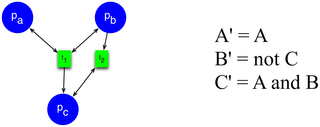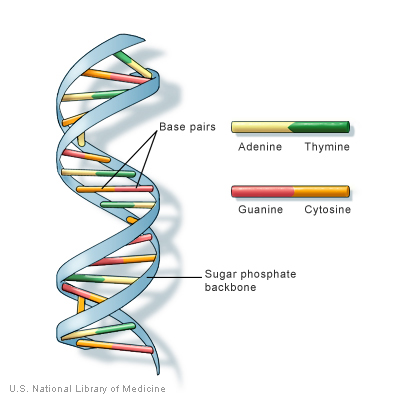Friday, November 15, 2013
The Man Who Bottled Evolution
"Richard Lenski's 25-year experiment in bacterial evolution shows no signs of running out of surprises about how mutation and selection shape living things." (though I don't think Gould was necessarily wrong, because he was not talking about evolution in closed vats, but in the wild where contingency is uncontrolled) News Focus @ Science


Thursday, November 14, 2013
▶ Simulation of millisecond protein folding
Simulating protein folding on the millisecond timescale has been a major challenge for many years. In a recent paper, Folding@home researchers Vincent Voelz, Greg Bowman, Kyle Beauchamp, and Vijay Pande have broken this barrier. This is a movie of one of the trajectories that folded (i.e. started unfolded and ended up in the folded state). From simulations like these, we have found some new surprises in how proteins fold. Please see the paper for more details.
Evolution as Opportunist
"A computational study reveals surprising flexibility hidden within metabolic networks, providing new evidence for an evolutionary concept called exaptation". News article @ Scientific American, full article @ Quanta Magazine
Labels: evolution, exaption, metabolic networks
Tuesday, November 12, 2013
Topology of viral evolution
"Evolution is mediated not only by random mutations over a number of generations (vertical evolution), but also through the mixture of genomic material between individuals of different lineages (horizontal evolution). The standard evolutionary representation, the phylogenetic tree, faithfully represents the former but not the latter scenario. Although many elaborations have been developed to address this issue, there is still no agreed-upon method of incorporating both vertical and horizontal evolution. Here, we present an alternative strategy based on algebraic topology to study evolution." Full paper @ PNAS


Friday, November 08, 2013
Modeling Integrated Cellular Machinery Using Hybrid Petri-Boolean Networks
"The behavior and phenotypic changes of cells are governed by a cellular circuitry that represents a set of biochemical reactions. Based on biological functions, this circuitry is divided into three types of networks, each encoding for a major biological process: signal transduction, transcription regulation, and metabolism. [...] Within the cell, these three types of networks work in tandem, and each produces signals and/or substances that are used by the others to process information and operate normally. Therefore, computational techniques for modeling integrated cellular machinery are needed. In this work, we propose an integrated hybrid model (IHM) that combines Petri nets and Boolean networks to model integrated cellular networks. Coupled with a stochastic simulation mechanism, the model simulates the dynamics of the integrated network, and can be perturbed to generate testable hypotheses." Full article @ PLOS Computational Biology

Genetics Driving Epigenetics
"Humans vary according to a plethora of traits, such as height, hair color, behavior, and susceptibility to disease. Both genetics (nature) and environment (nurture) contribute to this variation. Recent large-scale genetic studies have identified thousands of specific DNA variations in the human population that are associated with different traits. However, these studies do not answer a key question: By what means do most DNA variants alter cellular behavior and contribute to differences in specific traits, such as height? A trio of papers [...] find that DNA variants influence a layer of gene regulation called epigenetics through the sequence-specific activity of transcription factors." Perspective @ Science


Tuesday, November 05, 2013
Evolution Heresy? Epigenetics Underlies Heritable Plant Traits
"For some evolutionary biologists, just hearing the term epigenetics raises hackles. They balk at suggestions that something other than changes in DNA sequences, such as the chemical addition of methyl groups to DNA or other so-called epigenetic modifications, has a role in evolution. Yet a provocative study presented at an evolutionary biology meeting last month found that heritable changes in plant flowering time and other traits were the result of epigenetics alone, unaided by any sequence changes." News article @ Science


Labels: epigenetics, evolution
Why is the number of DNA bases 4?
Submitted by Aaron Schwartz (thanks!)
"In this paper we construct a mathematical model for DNA replication based on Shannon's mathematical theory for communication. We treat DNA replication as a communication channel. We show that the mean replication rate is maximal with four nucleotide bases under the primary assumption that the pairing time of the G-C bases is between 1.65 and 3 times the pairing time of the A-T bases." Full paper @ Bull Math Biol. 2006

"In this paper we construct a mathematical model for DNA replication based on Shannon's mathematical theory for communication. We treat DNA replication as a communication channel. We show that the mean replication rate is maximal with four nucleotide bases under the primary assumption that the pairing time of the G-C bases is between 1.65 and 3 times the pairing time of the A-T bases." Full paper @ Bull Math Biol. 2006

Labels: dna
Monday, November 04, 2013
Can Answers to Evolution Be Found in Slime?
"If you want to find life forms that truly seem otherworldly, your local forest is a much better place than your local cineplex. It is home to creatures that are immensely old, fundamentally bizarre and capable of startlingly sophisticated behavior. They are the slime molds." Full article @ NY Times.


Labels: evolution, life, slime mold
Friday, November 01, 2013
Structural and Functional Brain Networks: From Connections to Cognition
"The human brain presents a puzzling and challenging paradox: Despite a fixed anatomy, characterized by its connectivity, its functional repertoire is vast, enabling action, perception, and cognition. This contrasts with organs like the heart that have a dynamic anatomy but just one function. The resolution of this paradox may reside in the brain's network architecture, which organizes local interactions to cope with diverse environmental demands—ensuring adaptability, robustness, resilience to damage, efficient message passing, and diverse functionality from a fixed structure. This review asks how recent advances in understanding brain networks elucidate the brain’s many-to-one (degenerate) function-structure relationships. In other words, how does diverse function arise from an apparently static neuronal architecture? We conclude that the emergence of dynamic functional connectivity, from static structural connections, calls for formal (computational) approaches to neuronal information processing that may resolve the dialectic between structure and function." Full paper @ Science



